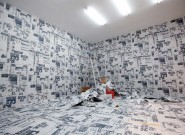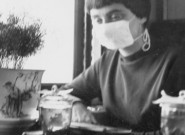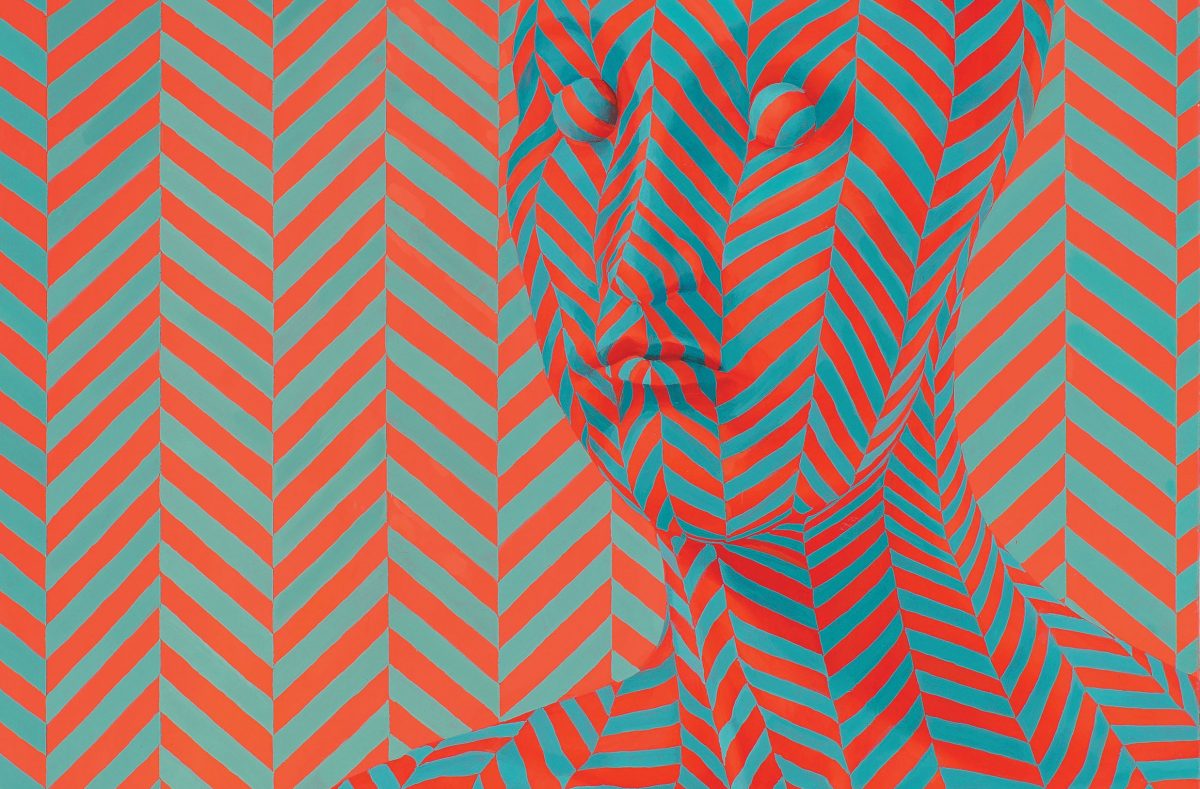German curator Alfons Hug has served as Director of the Goethe-Institut in many cities since the 1980s, including Lagos, Medellín, Brasilia, Caracas, Moscow, and currently Rio de Janeiro. Of the five BRICS countries, Hug is familiar with three. Two years ago, he began to plan BRICS-related programs, the starting point for which is an exhibition…
Read MoreEntering Hu Xiaoyuan’s most recent solo exhibition, “No Fruit at the Root,” begins with passing through a somewhat narrow corridor in the shadow of tall separating walls. This winding corridor joins three spaces: one dark, one bright, and one with darkness set in the center of light. The layout is in graceful disorder, and the…
Read MoreI can’t tell the difference between wisdom and the ability to feel (intuition); they’re the same thing. — Jean-Luc Godard EXPOSURE THERE REALLY AREN’T many things we can do. Most of the time, initiating an activity begins with “observing” both the world and our own position within it; the means and outcome of this observation…
Read MoreFor those counting, the Guangzhou Triennial has lost its tri-annual rhythm. In fact the latest installment comes not three but four years after Gao Shiming’s “Farewell to Postcolonialism” of 2008. This fuzzy math was reconciled with a series of precursor exhibitions that began with “Meta Question—Back to the Museum Per Se,” a title that aptly…
Read MoreThis gesture sets an example: Hauser & Wirth Zürich shows 17 brand-new canvases by a Chinese painter. A major part of the 2012 production of the Shanghai-based Zhang Enli, these are taken directly from the studio to the eyes of the viewer, who smells the fresh oil paint in the space. For Zhang, this exhibition…
Read MoreFor this report, LEAP sent surveys to more than a dozen public and private museums on the Mainland, through the results attempting to gain insight into the state of museum collection in China today. Due to busy schedules or administrative reasons, a few of these institutions tactfully declined or demonstrated it was inconvenient to participate…
Read MoreThese new works by Zhan Wang continue his explorations of the nature of the universe and the forms that make up our understanding of it. Long March’s galleries have been divided into two areas, which might be characterized as a light space and a dark space. The light space presents floor- and wall-mounted panels of…
Read MoreUpon entering Matthias Küper, one can easily be baffled by the show’s half-installed state. A roll of foam-wrap sits in the corner while several photographs rest against the room’s walls, ready to be hung. Cai Dongdong invites the viewer into a fragmented realm, one not yet done but not quite undone; his use of carefully…
Read MoreTraditionally, public art museums are expected to conduct a certain amount of public education. However, due to China’s emphasis on systematized education, public education programs in public art museums have failed to cast off the traditional educational model of training and lectures. In recent years, private museums have devoted more resources to and employed more…
Read More“Not Included” suggests to the viewer a program for contemporary art to follow, which is to continuously transform questions about its operating mechanisms into artworks. In this sense, “Not Included” is focused on providing a candid description of the ambiguous boundaries in Lu Pingyuan’s relationship with his creations. This is not the type of inclusive…
Read MoreCurated by Biljana Ciric, the series “Alternatives to Ritual” takes the idea of artists’ museums from Documenta 5 as its departure point. Six artists were invited to show their works throughout the Goethe-Institut offices as a group exhibition. Each artist also takes turns exhibiting a solo project in the public Open Space. Additionally, special events…
Read MoreAsked by LEAP to reflect on my curatorial role and on exhibition making as an independent curator, I proposed a discussion with Jens Hoffmann on his experience curating the Shanghai Biennale. As seen in the dialogue, it is very difficult for an international curator to understand the complexity of the local context in China. What…
Read MoreSpanning 30 years, “Material-ism” is a comprehensive retrospective of Yung Ho Chang and his architecture atelier’s body of work. The exhibition includes 6 installation modules, 40 models and 270 drawings and blueprints. The result is a full picture of Chang’s practice and explorations of architecture, culture, and art. A majority of Yong Ho Chang’s drawings…
Read MoreRoughly speaking, so-called contemporary art has existed in China for more than 30 years. Any list of its representative artists would include Wang Guangyi, who has certainly become— in his own words— “an artist of significance.” So as a retrospective of his works, “Thing-In-Itself: Utopia, Pop, and Personal Theology” must face questions such as these:…
Read MoreThis discussion between co-curator of the Shanghai Biennale Jens Hoffmann, independent curator Biljana Ciric, and artist Hu Yun reflects on Hoffmann’s curatorial involvement in the 2012 Shanghai Biennale, and on the role of exhibition makers in Chinese institutional structures. Specifically, it aimed to initiate dialogue on the institutional models that can work in a China-specific…
Read MoreBOOM Concurrent with China’s rapid urbanization over the past three decades is an equally unprecedented museum-building boom. On average, nearly 100 new museums are being built annually across the country. During 2011, that figure reached a staggering 386 new museums— more than one per day. To better gauge the magnitude of this growth, at the…
Read MoreIt was a series of very fortunate events that led Boris Groys to his discovery of the photographs and postcards that became “After History: Alexandre Kojève as a Photographer.” It could be said that Kojève is partially responsible for popularizing the concept of “post-history,” or what happens after history ends. It remains his greatest contribution…
Read MoreVisitors to this year’s inaugural “Future” exhibition at the Central Academy of Fine Arts Museum, should they have ascended the rampway between the third and fourth floors, could not have missed a several meter long array of hand drawings haphazardly strewn along the wall: a detailed outline of all employees of a southern Guangdong municipal…
Read MoreONE COULD SAY that Li Songsong’s The One is a major work, one that seeks purity by way of refining the understanding of the language of oil painting, or by way of the conceptual. The work itself, roughly speaking, is a cylindrical silver tunnel, the inner walls of which are covered with 91 monochromatic paintings…
Read MoreThe DSL Collection, founded by Sylvain and Dominique Levy, ranks among the most comprehensive holdings of Chinese contemporary art in the world. Sylvain sat down with LEAP to discuss the art of collection and the digital channels through which they have chosen to display their findings. LEAP How did you start collecting Chinese contemporary art?…
Read More





